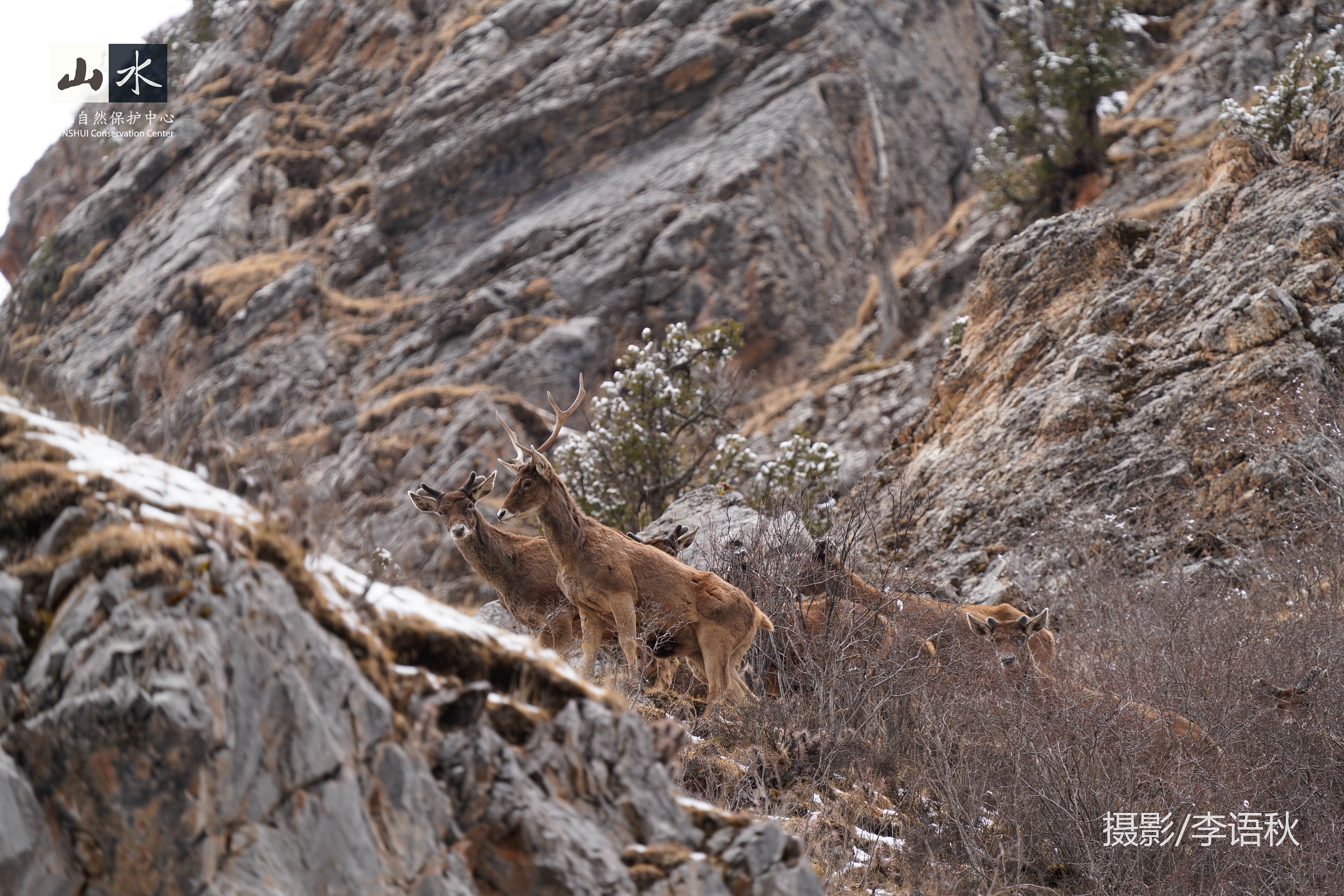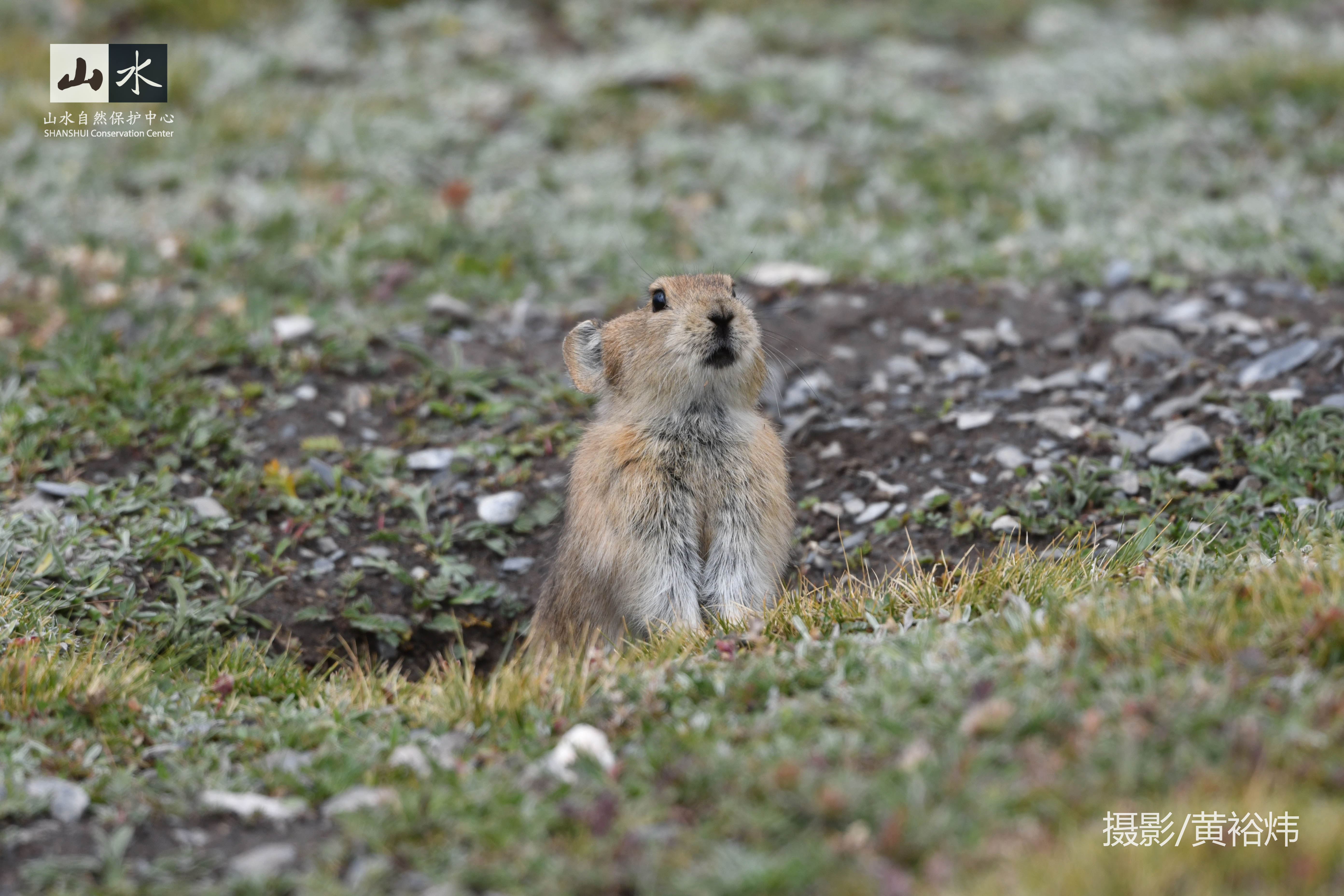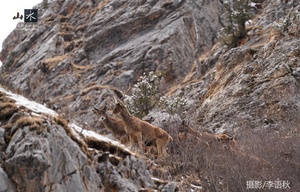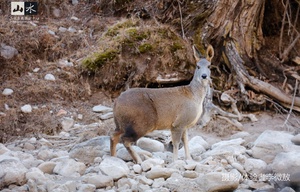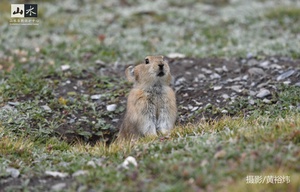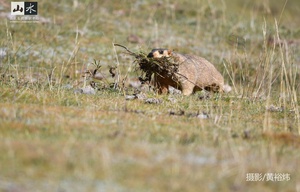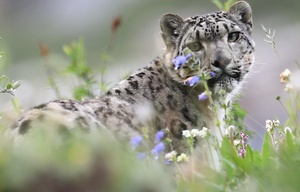Scientific Name: Pseudois nayaur
Classification: ARTIODACTYLA Bocidae
Protection Class:National Class II
Size: body length 100-155cm, male weight 50-80kg, female weight 32-51kg
Blue sheep are preys of snow leopards and are very common in Angsai. They often occur in herds, sometimes up to 200 in a group. The large population of blue sheep here provides a rich source of food for snow leopards.
Blue sheep are herbivores that live near - and mainly below - the snow line. They are agile in steep bare rock environments, have excellent jumping and climbing abilities, and their coats provide good camouflage in alpine bare rock and screes. It is because of these skills that blue sheep distinguish their range from other herbivores (white-lipped deer, marmots, woolly hare, and pikas) and occupy their unique position in the ecological system.



